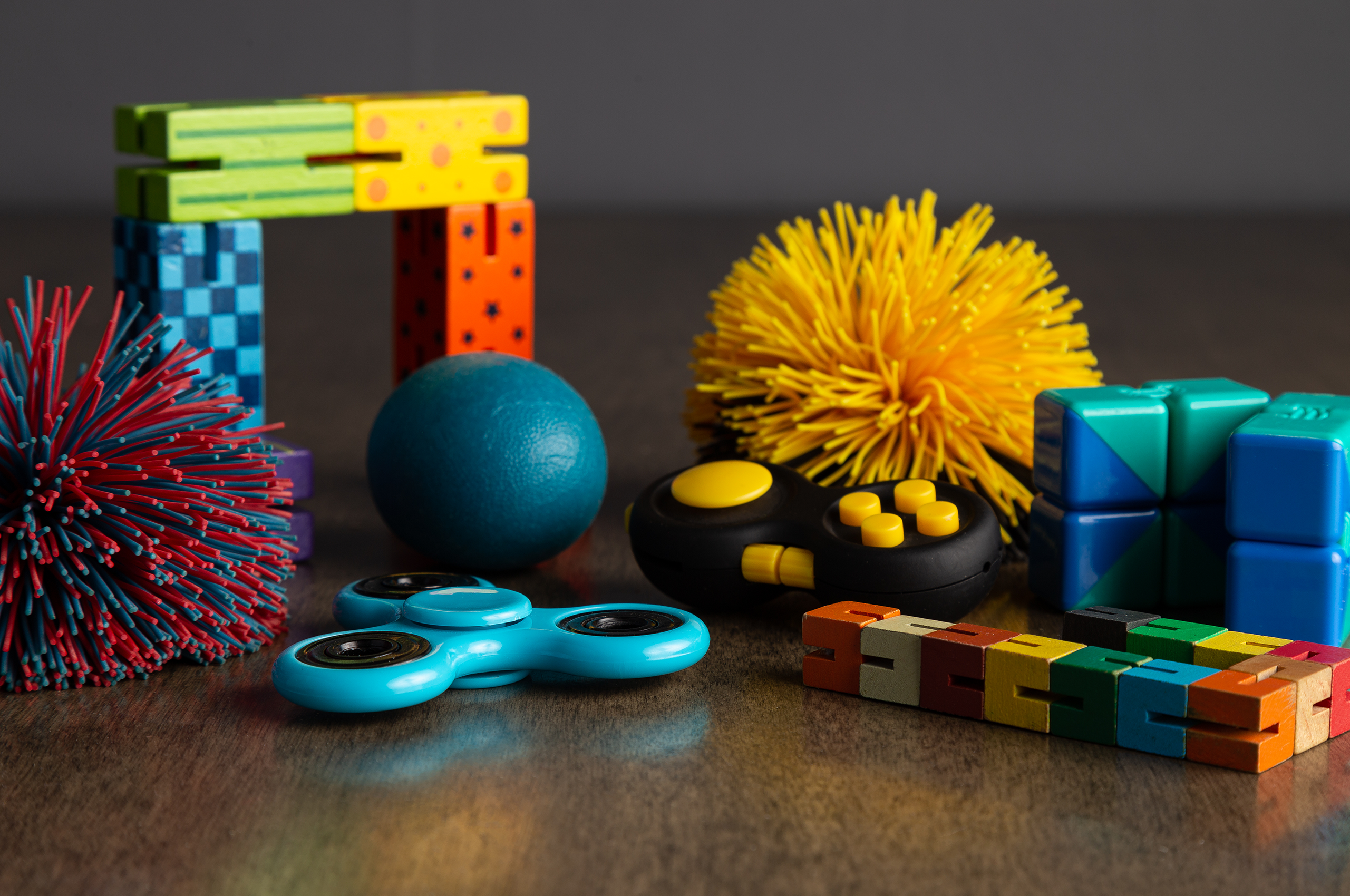A Place for All Students to Learn: 11 Tips for Building Sensory-Friendly Classrooms
Do you have a student who just can’t sit still? Or one who seems to have no sense of personal space? Or maybe you have a student who has a meltdown at even the smallest change in routine. If so, they might have a sensory processing issue.
As a teacher, you want to ensure that all of your students can learn in your class. But for some students, the traditional classroom presents huge obstacles. It’s full of color, bright lights, and loud noises that contribute to sensory overload. Building a sensory-friendly classroom can help each of your students learn and excel, but how do you create such an environment?
Below, we’ve provided some simple ways that you can establish a learner-friendly classroom environment for all students.
What are Sensory Processing Issues?
We get information through our five senses: touch, taste, smell, sight, and sound. Experts have also identified two additional senses: body awareness and movement. Body awareness is understanding where you are in relation to other people or objects, while the body movement sense affects balance and coordination.
Individuals with a sensory processing disorder experience difficulty processing information from their senses. They’re generally categorized as either hyposensitive or hypersensitive.
- Hyposensitive means the person is undersensitive and will try to find more sensory stimulation.
- Hypersensitive refers to an oversensitive person who gets overwhelmed by sensory stimulation.
A hyposensitive student might jump on and off things. They give tight hugs or crash hard into things because they are looking for more intense contact. They’re constantly on the move–spinning, rocking, and swinging.
On the other hand, a hypersensitive student might have trouble with balance or climbing. They tend to avoid physical touch and don’t typically want to be around a lot of people.
Often, children aren’t completely hyposensitive or hypersensitive. Rather, you’re more likely to see a mix of the two. This can make understanding your student’s needs more difficult, but it isn’t impossible. Take the time to get to know your students’ needs, and be sure to communicate openly with parents and guardians. They’ll play a pivotal role in helping you while building a sensory-friendly classroom.
Sensory processing issues are often associated with autism. These issues can also be a result of attention-deficit hyperactivity disorder (ADHD) or obsessive-compulsive disorder (OCD). Or, they may not stem from any particular diagnosis.
You might notice the following characteristics in students with sensory processing issues:
- Unable to handle changes in routine
- Difficulty with coordination or balance
- No sense of personal space
- Unaware of pain they cause someone
- Unaware of injury they cause themselves
- Not recognizing their strength
- Not recognizing situations that can put them in physical danger
- Chewing on non-food objects
- Complaining about itchy, tight, or rough clothing
- Worry about touching other people
- Startled by bright lights or loud noises

11 Tips for Building Sensory-Friendly Classrooms
A learner-friendly classroom environment ensures that all of your students can thrive. You may create this environment by changing the physical layout of the room, incorporating classroom-friendly supplies, and implementing various activities. Here are eleven things to consider while building a sensory-friendly classroom.
1. Lighting
Think about the lighting in your classroom. Like most, it probably has bright fluorescent lights. To make your room more sensory-friendly, try adjusting your lighting. If you have a lot of windows, let the natural light shine in. Incorporate floor lamps into your classroom layout. This way you can control which areas of your room are lit and the brightness.
2. Walls and Decor
The walls in many classrooms are filled with colorful posters, bulletin boards, and decorations. This array of colors and designs can trigger a sensory overload for some students. Look around and make sure that all your decorations serve a purpose. If they’re unnecessary, consider taking them down.
Check for other clutter that can be removed, such as stacks of old books, piles of papers, and craft materials that are no longer needed. If you aren’t using it for your immediate teaching needs, put it away or get rid of it.
3. Carpets
Using carpets on your floors helps minimize the noise. If your classroom has linoleum flooring, you can buy carpet remnants to scatter around your room for a low cost. You can also use them to define different areas of your classroom and create boundaries. To avoid overstimulation, opt for neutral colors.
4. Seating
Think about your seating arrangement. Is it conducive to both small group work and large group instruction? Are there clearly defined walkways? Here are a few ways to adjust your classroom seating arrangement for students with sensory issues:
- Arrange seating to flow with your classroom schedule
- Turn desks away from windows and doors to avoid outside distractions
- Put tennis balls on chair feet to reduce scraping sounds
- Use kick bands to help students expend excess energy
- Incorporate flexible seating options
Even students without sensory processing issues can benefit from alternative seating. Some students might learn well on exercise balls, bean bag chairs, or large cushions. Other students might prefer to stand or spread out on the floor. Be open to moving away from the traditional desks and chairs when building a sensory-friendly classroom.
5. Labels
Using pictures to label cabinets and bins around the classroom will help your students understand where items can be found. It will also be helpful when you ask students to put things away.
You can also label different areas of your classroom so students know what activities take place there. Again, use pictures to illustrate the activities.
Additionally, as students with sensory issues typically do well with routine, be sure to create a visual daily schedule at the front of your classroom. Students can better prepare for the day when they know what to expect.
6. Quiet Area
Have a dedicated area in your classroom where students can go to calm down or have quiet time. You may want to include headphones so students can block out the other classroom noise and a few fidget toys or calming items. Just don’t overload the area with too many distractions.
Be careful to not present this area as a punishment, but rather as a place for relaxation. Explain the purpose of the area to all your students, and normalize the need to go there so there isn’t a negative stigma attached to it.

7. Fidget Toys and Tools
Have fidget toys or tools available to your students. Think about how to use sensory toys in your classroom. You may allow students to keep the toys at their desks, or you may have a specified place where students can pick them up. Do what works best for your students.
You might find it necessary to implement a rule system for fidget toys. If so, put it in writing. Then, send it home with the student and make sure that both the student and a guardian agree to the rules. This will help reduce any issues with fidget toys in your classroom.
There are a wide variety of fidget toys and tools available. You don’t want to overload the options, but you’ll want a few different types so that your students can find what works best for them. Here are a few popular fidget tools:
- Fidget spinners
- Puzzle cubes
- Knot puzzles
- Squishy toys
- Puzzle balls
- Pop fidgets
- Chewable pencil toppers
8. Visual Timer
To minimize time-related stress, try displaying a large timer in the front of your classroom. Use this to show students how long they will be doing an activity. Students will be able to prepare for transitions between activities as they see the clock counting down.
9. Songs and Rhymes
Another way to prompt students throughout the day is to use songs and rhymes. You can use a song or rhyme when it’s time to change from one activity to another or to explain how to do an activity. Songs and rhymes are great tools to help students learn and remember.
Here are a few ideas to get you started.
10. Movement
If your students are having a hard time sitting still, they likely need a few minutes of movement. School days are long, and too much time spent in a desk chair can make it difficult for kids to pay attention. Incorporating motions into your lessons can help students expel excess energy and revitalize them so they’re ready to learn. So, allow students to stand up and move around whenever you can fit it into your day.
If you can, consider adding some unstructured playtime to your day. You already have a lot to do in the school day, so, understandably, it probably feels like you don’t have time for unstructured play. However, you may find that by giving students extra playtime, they will be able to pay attention more during lessons.
Numerous studies show correlations between movements and students’ ability to learn. When you use movement in learning and allow students to move more in general, you’ll likely see positive academic and behavioral results.
11. Classroom Routine
Most students, even those without sensory processing issues, thrive on routine. So, while building a sensory-friendly classroom, it’s important to create a routine and stick to it as much as possible.
Each morning, go over what students can expect each day first thing in the morning. This will help your day flow more smoothly. Prepare your students ahead of time for any changes in routines. For example, remind them often if there is a school assembly or a special classroom activity coming up.
Additionally, be sure that students know if there will be a fire drill or other type of drill. Tell them as soon as you know about it, and remind them often. Any drill with an alarm can be overwhelming for students with sensory processing issues. You can help to avoid meltdowns by preparing them ahead of time.

Creating an Inclusive Classroom Culture
How your students feel in your classroom is more important than all the fidget toys, seating arrangements, and classroom routines. For that reason, it’s essential to create a supportive and caring learning environment where all students feel welcome.
Get to know each student as an individual and understand what that student’s special needs are. Promote inclusivity and understanding. Teach your students to respect each other’s different learning styles and abilities. These measures will go a long way in establishing a learner-friendly classroom environment for all.
Don’t discount a student because he or she has a sensory processing issue. Be sure your students know that you are confident in their abilities. Don’t focus on what they can’t do—focus on what they can do and how you can best support them.
Make your classroom a haven for your students. When students feel safe, comfortable, and accepted, they’re better able to learn and grow academically and personally.

These delightful leveled books extend the reading experience far beyond the pages as students read about a song, game, or craft that lends itself to quick, easy, and fun classroom activities.
View Product →
